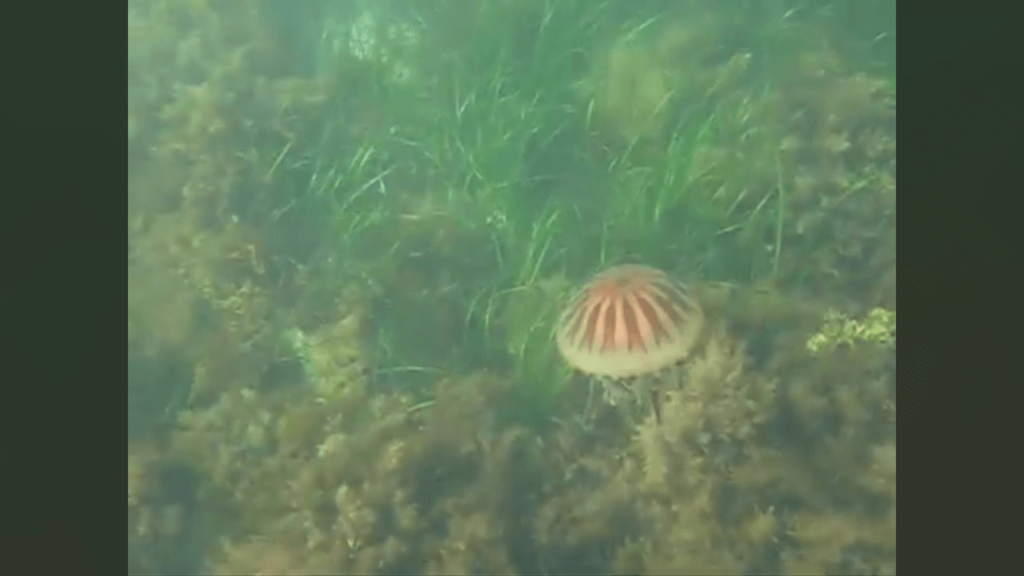Ireland’s coastlines are home to a fascinating underwater world, and one of its most intriguing inhabitants is the jellyfish. From the colorful, harmless moon jellyfish to the potentially dangerous lion’s mane, these creatures spark curiosity and caution among locals and visitors alike. If you’re exploring Ireland’s shores, knowing about these sea creatures can make your experience both enjoyable and safe.
This guide dives deep into all you need to know about jellyfish in Ireland. We’ll explore their types, where to find them, safety tips, and much more.
What Are Jellyfish?
Jellyfish are soft-bodied marine creatures that belong to the phylum Cnidaria. They have:
- A jelly-like, umbrella-shaped body called a bell.
- Tentacles, which are used for capturing prey and sometimes for defense.
- No bones, heart, or brain.
Jellyfish are not technically fish—they are invertebrates that have been in Earth’s oceans for over 500 million years!
Types of Jellyfish Found in Ireland
Ireland’s waters host a variety of jellyfish species. Let’s explore the most common ones:
| Jellyfish Type | Description | Sting Level | Best Time to See |
|---|---|---|---|
| Moon Jellyfish | Transparent with four purple rings. | Harmless to humans. | Summer and autumn. |
| Lion’s Mane Jellyfish | Large, red or orange with long tentacles. | Can cause painful stings. | Late spring to summer. |
| Compass Jellyfish | Brown or reddish V-shaped markings. | Mildly painful sting. | Summer. |
| Barrel Jellyfish | Huge, dome-shaped, and often pale in color. | No sting or very mild. | Spring and summer. |
| Blue Jellyfish | Bright blue with short tentacles. | Moderate sting. | Summer. |
| Portuguese Man o’ War | Purple-blue float with trailing tentacles. | Severe and dangerous. | Occasionally in autumn. |
Detailed Jellyfish Profiles
Moon Jellyfish
- Behavior: Moon jellyfish are passive drifters, meaning they rely on ocean currents for movement.
- Interesting Fact: Despite being harmless to humans, they have tiny stinging cells that help them capture microscopic prey.
- Where to Spot: Harbors, estuaries, and sandy beaches along Ireland’s coastline.
Lion’s Mane Jellyfish
- Behavior: Known for its long, flowing tentacles, which can stretch over 30 meters.
- Danger Level: Their sting can cause intense pain, nausea, and, in rare cases, more severe reactions.
- Where to Spot: Cooler waters of the north and west, such as Donegal Bay and Galway Bay.
Compass Jellyfish
- Behavior: These jellyfish are active swimmers and often found near the surface.
- Danger Level: Their sting is usually mild but can cause irritation.
- Where to Spot: Common along the southern and eastern coasts, particularly in Wexford and Waterford.
Barrel Jellyfish
- Behavior: Often spotted floating lazily in shallow waters.
- Interesting Fact: They are one of the largest jellyfish species in Ireland but are harmless to humans.
- Where to Spot: Popular sightings include Cork and Kerry beaches.
Blue Jellyfish
- Behavior: Usually found in small groups and closer to the shore.
- Danger Level: Their sting is moderately painful but not dangerous.
- Where to Spot: Often seen near rocky coasts or piers, especially along the east coast.
Portuguese Man o’ War
- Behavior: Not technically a jellyfish but a siphonophore—a colony of specialized organisms working together.
- Danger Level: Highly venomous; stings can cause severe pain, difficulty breathing, and even heart issues.
- Where to Spot: Rare but occasionally washes ashore during storms, especially in autumn.
Where Can You Spot Jellyfish in Ireland?
Ireland’s 3,000 kilometers of coastline offer plenty of opportunities to see jellyfish.
Popular Jellyfish-Spotting Locations:
- Wild Atlantic Way
- Known for its rugged beauty and rich marine life.
- Hotspots: Galway Bay, Donegal beaches, and Kerry.
- East Coast Beaches
- Dublin and Wexford often have jellyfish sightings in summer.
- Southern Coast
- Areas like Cork and Waterford are popular for marine diversity.
Tip: Check with local guides or beach notices for recent jellyfish sightings.
Why Are Jellyfish Found Along Irish Shores?
Jellyfish blooms, or large gatherings, often occur in Irish waters due to:
- Warmer Sea Temperatures: During summer, waters warm up, attracting jellyfish closer to shore.
- Ocean Currents: These currents bring jellyfish into bays and along beaches.
- Plankton Abundance: Jellyfish feed on plankton, which thrives in Irish coastal waters.
Do Jellyfish in Ireland Sting?
Jellyfish are fascinating creatures found in oceans around the world, including the waters surrounding Ireland. While they might look beautiful and graceful, many people wonder: Do jellyfish in Ireland sting? The short answer is yes, some jellyfish in Ireland can sting. However, not all of them are harmful to humans, and their stings can vary in intensity.
Safety Tips for Encountering Jellyfish
Enjoying the beach? Stay safe with these tips:
General Precautions:
- Avoid Touching Jellyfish: Even dead jellyfish can sting.
- Wear Water Shoes: Protect your feet when swimming or walking along the shore.
- Check Beach Notices: Lifeguards often post warnings about jellyfish.
- Keep Children Supervised: Ensure kids don’t pick up jellyfish out of curiosity.
What to Do if You Get Stung:
- Identify the Jellyfish (if possible).
- Rinse the Sting Area: Use seawater, not freshwater. Freshwater can worsen the sting.
- Apply Vinegar: Particularly helpful for lion’s mane and Portuguese man o’ war stings.
- Remove Tentacles: Use a pair of tweezers. Avoid bare hands.
- Apply a Cold Pack: Reduces swelling and pain.
- Seek Medical Help: For severe stings or allergic reactions.
The Most Dangerous Jellyfish in Ireland
While the risk of being stung by a deadly jellyfish in Ireland is low, there are still a few species that should be treated with caution. Here’s a closer look at the most dangerous ones:
1. Lion’s Mane Jellyfish (Cyanea capillata)
The Lion’s Mane jellyfish is the most dangerous species you are likely to encounter in Irish waters. Known for its striking appearance, it is one of the largest jellyfish in the world. Its bell can grow up to 2 meters (about 6.5 feet) in diameter, and its tentacles can extend up to 30 meters (98 feet).
- Sting Symptoms:
The sting of the Lion’s Mane jellyfish can cause intense pain, redness, and swelling at the site of contact. In more severe cases, the venom can cause nausea, vomiting, difficulty breathing, and in extreme cases, paralysis. - Where You’ll Find It:
This jellyfish is most commonly found in Irish waters during the summer and early autumn months, especially in the cooler coastal areas. It is most frequently seen around the west coast of Ireland and the Irish Sea.
2. Portuguese Man o’ War (Physalia physalis)
While not technically a true jellyfish, the Portuguese Man o’ War is often included in discussions of dangerous jellyfish. It is a colonial organism made up of several polyps that work together as one entity, but its long, trailing tentacles can still deliver a painful sting.
- Sting Symptoms:
The sting of the Portuguese Man o’ War can cause excruciating pain, welts, and intense burning sensations. In severe cases, it can lead to difficulty breathing, dizziness, and a drop in blood pressure. It can be life-threatening, especially if stung multiple times. - Where You’ll Find It:
While the Portuguese Man o’ War is more commonly found in warmer waters, it has occasionally been spotted along the southern coast of Ireland, especially in the summer months. Keep an eye out for their balloon-like float, which sits on top of the water.
3. Compass Jellyfish (Chrysaora hysoscella)
The Compass jellyfish is another species that can deliver a painful sting. It is typically not as dangerous as the Lion’s Mane or the Portuguese Man o’ War, but it should still be approached with caution.
- Sting Symptoms:
The sting from a Compass jellyfish can cause mild to moderate pain, redness, and swelling. It’s usually not life-threatening, but the sting can be quite uncomfortable and may result in skin irritation lasting a few hours to a day. - Where You’ll Find It:
The Compass jellyfish is most common in Irish waters during the warmer summer months and can be found in coastal areas. Its name comes from the characteristic compass-like markings on its bell.
Fascinating Facts About Jellyfish
- Age: Jellyfish existed before dinosaurs.
- Bioluminescence: Some species glow in the dark.
- Immortal Species: The Turritopsis dohrnii jellyfish can revert to its juvenile form, essentially living forever.
- Jellyfish Blooms: These can sometimes disrupt fishing nets and power plants.
Tips for Photography and Observation
Want to capture the beauty of jellyfish? Here’s how:
- Use Natural Light: Early morning or late afternoon offers the best light for photography.
- Avoid Disturbing the Jellyfish: Keep a safe distance while observing.
- Bring a Polarizing Filter: Reduces glare from the water surface.
- Visit Aquariums: Many Irish aquariums, like Galway Atlantaquaria, have jellyfish displays.
Conservation and the Role of Jellyfish in the Ecosystem
Jellyfish play a critical role in marine ecosystems:
- Food Source: For turtles, fish, and seabirds.
- Plankton Control: They help balance plankton populations.
However, human activities like overfishing and pollution are causing jellyfish populations to grow unchecked in some areas.
Jellyfish and Irish Culture
While jellyfish don’t hold significant cultural importance in Ireland, they are a frequent topic among beachgoers, marine biologists, and eco-tourists. Their presence highlights the importance of marine conservation.
Plan Your Jellyfish Adventure
Ready to explore Ireland’s jellyfish? Here’s how to plan:
When to Visit:
- Best Months: Late spring to early autumn for most jellyfish sightings.
What to Bring:
- Beach Essentials: Sunscreen, water shoes, and a first-aid kit.
- Camera: For stunning coastal shots.
Key Places to Visit:
| Region | Top Spot | Why Visit? |
|---|---|---|
| West Coast | Galway Bay | Rich in marine life and jellyfish. |
| South Coast | Tramore, Waterford | Popular for family-friendly beaches. |
| East Coast | Malahide Beach, Dublin | Easy access and scenic views. |
Conclusion
Jellyfish in Ireland are both mesmerizing and mysterious. Whether you’re fascinated by their graceful movements or curious about their role in marine ecosystems, Ireland’s coasts offer a perfect place to learn and explore. Just remember to stay safe and enjoy these incredible creatures from a respectful distance!
With a little preparation, your Irish jellyfish adventure can be both magical and memorable.
Frequently Asked Questions
Q: Are jellyfish dangerous in Ireland?
A: Most species in Ireland are harmless or have mild stings. The lion’s mane and Portuguese man o’ war are exceptions, requiring caution.
Q: Can you swim in areas with jellyfish?
A: Yes, but wear protective clothing, avoid touching jellyfish, and follow local safety advice.

Hi, I’m Tanvir, the founder and author of Explore Ireland Now. With a deep love for Ireland and its rich culture, history, and landscapes, I created this site to share everything that makes this beautiful country worth exploring. Whether you’re a local looking for hidden gems or a traveler planning your next adventure, I provide insightful guides, tips, and recommendations to help you experience Ireland to the fullest.
From stunning landscapes to vibrant cities and quaint villages, Ireland is full of wonders waiting to be discovered. Through my personal experiences and research, I aim to bring you the most up-to-date information and inspiration for your journey.
Thank you for visiting Explore Ireland Now—I hope my content helps you uncover all that this incredible country has to offer! If you have any questions or need travel advice, feel free to reach out.



